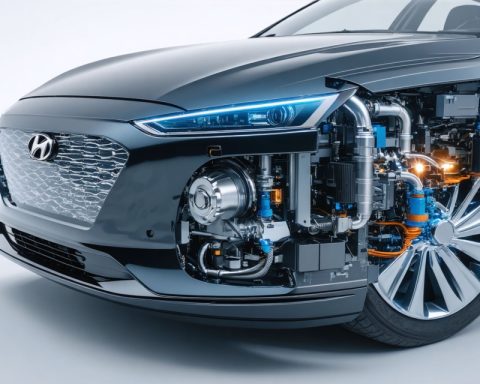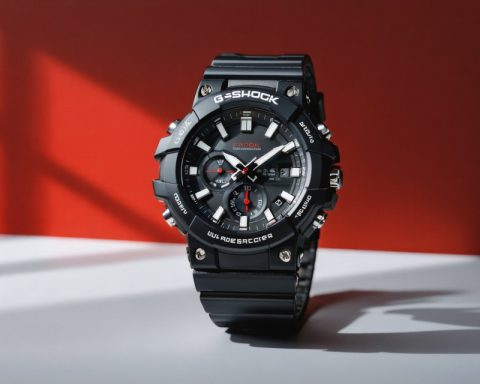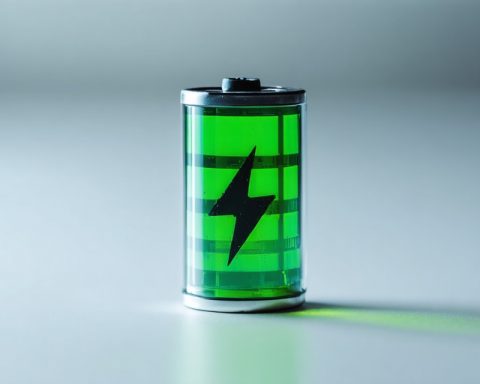- Japan’s UBE Corporation pioneers the first U.S. facility for producing DMC and EMC, critical for EV lithium-ion batteries, in Louisiana.
- The $500 million project will create over 400 temporary jobs during construction and 50-60 permanent skilled positions by late 2026.
- Utilizing a proprietary, environmentally conscious process, the plant will produce 100,000 tons of DMC and 40,000 tons of EMC annually.
- This venture strengthens America’s role in clean energy and reduces reliance on imports, enhancing its global manufacturing competitiveness.
- Lousiana’s expansion in EV material facilities represents part of a $2.4 billion state initiative, generating over 600 jobs and promoting renewable energy.
In a ceremonious blend of tradition and innovation, Japan’s UBE Corporation took the first steps to reshape America’s clean energy landscape. With a sake barrel-breaking ceremony, UBE has set the stage in Louisiana for what will become the United States’ sole production facility for dimethyl carbonate (DMC) and ethyl methyl carbonate (EMC). These compounds, vital for lithium-ion batteries in electric vehicles (EVs), are poised to reduce America’s reliance on imports and elevate its role in the global clean energy arena.
As the first shovels hit the ground at the Cornerstone Energy Park in Waggaman, the $500 million project promises more than just cutting-edge technology. Over the course of construction, UBE will generate over 400 temporary construction jobs and support 50-60 full-time, skilled positions when operations commence in late 2026. This investment not only boosts the local economy but also reinforces the nation’s manufacturing strength.
Utilizing a proprietary process perfected since the 1970s, UBE commits to a negligible environmental footprint, contrasting sharply with the resource-intensive methods prevalent in other global production hubs. The plant is set to produce an impressive 100,000 tons of DMC annually, with an additional 40,000 tons of EMC derived each year, cementing the U.S.’s position as a burgeoning leader in EV technology.
Louisiana’s leap into the future with UBE is just a snapshot of the broader $2.4 billion investment magnetizing the state, which promises over 600 jobs across burgeoning EV materials facilities. This development heralds a pivotal moment for American manufacturing, underscoring a nation rallying behind renewable energy and technological sovereignty.
How UBE Corporation’s Clean Energy Leap Transforms America’s EV Landscape
How-To Steps & Life Hacks
1. Understanding Dimethyl Carbonate (DMC) and Ethyl Methyl Carbonate (EMC):
– DMC and EMC Basics: Used as electrolytes in lithium-ion batteries, these compounds are critical in energy storage for EVs.
– Application Tip: For small-scale projects or educational purposes, explore online kits that mimic their functionalities.
– Sourcing DIY Materials: Purchase small quantities of these chemicals and protective gear via specialized chemical suppliers.
2. Setting Up EV Charging Stations:
– Site Selection: Choose easily accessible and safe locations for community or private charging stations.
– Installation Guide: Work with certified electricians to ensure compliance with local electrical standards.
Real-World Use Cases
– Battery Manufacturing: The production of DMC and EMC is a boon for battery manufacturers, enhancing local supply chains and reducing import dependencies.
– Renewable Energy Initiatives: These compounds support renewable energy storage systems, pushing forward solar and wind power adoption.
Market Forecasts & Industry Trends
According to Grand View Research, the global lithium-ion battery market is projected to grow notably, driven by increasing EV adoption. The UBE facility will enhance the U.S. market’s competitive edge, potentially lowering costs for battery production and improving sustainability efforts.
Reviews & Comparisons
– Global Outputs: Compared to China and Europe, where production is resource-intensive, UBE’s approach in the U.S. leverages more sustainable processes.
– Market Position: UBE’s investment aligns the U.S. more closely with leading EV technology contributors.
Controversies & Limitations
– Environmental Concerns: While claiming a negligible footprint, scrutiny remains on long-term ecological impacts. Ongoing monitoring and transparent data are essential.
– Operational Delays: Like any large-scale project, potential construction delays could impact timelines and projected benefits.
Features, Specs & Pricing
– Production Capacity: 100,000 tons of DMC and 40,000 tons of EMC annually.
– Investment Details: A $500 million investment framework bolstering local employment and infrastructure.
Security & Sustainability
– Eco-Friendly Manufacturing: UBE’s proprietary process positions it as an industry leader in sustainable chemical production.
– Security Enhancements: The facility strengthens supply chain security for critical components in the domestic EV market.
Insights & Predictions
As the U.S. bolsters its domestic capabilities, anticipate accelerated growth in the local EV market with strategic industry partnerships.
Tutorials & Compatibility
– Battery Technology Compatibility: DMC and EMC are compatible with multiple lithium-ion battery chemistries, making them versatile for various EV models.
Pros & Cons Overview
Pros:
– Reduces reliance on imports
– Creates jobs
– Environmentally friendly production
Cons:
– High initial investment
– Possible extended construction timeline
Actionable Recommendations and Quick Tips
– For Communities: Encourage local training programs in EV technology to prepare for job opportunities.
– For Investors: Stay informed about emerging trends in sustainable manufacturing to make strategic investment choices.
– For Policy Makers: Enhance incentives for companies adopting sustainable practices.
These steps and insights help everyone from businesses to consumers understand and leverage the rise of domestic EV materials production. Explore more about these initiatives and how they reshape renewable energy landscapes through leading industry resources.







